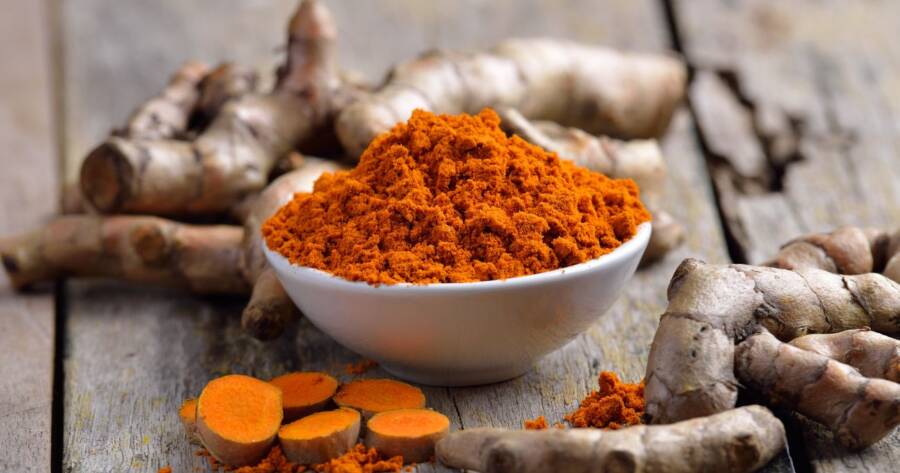Rheumatoid arthritis is a condition that affects over 1.3 million Americans and one percent of the world’s population. Here are some natural treatments for those dealing with RA.
Cloves
Clove buds go back thousands of years to ancient China where they were used in seasonal and holiday recipes. Inside of its hard shell, it contains an oil. The oil has potent anti-inflammatory properties. Studies have also found that it can help prevent new inflammation from occurring.
It can be found as a liquid extract, powdered as a spice, or in the form of a pill supplement. If you do not mind the taste, you can add it as a spice to many different foods. Use the clove buds to combat inflammation, the root of rheumatoid arthritis pain.
Garlic
Garlic is known to be helpful in treating many health conditions. It has been clinically supported that garlic can be used to treat diabetes, colds, and rheumatoid arthritis, just to name a few. It strengthens the immune system and has anti-inflammatory properties. Plus, it can reverse the effects of nephrotoxicity, a side effect of drugs commonly prescribed for arthritis treatment.
A study in 1999 observed the effects of garlic on 30 patients who suffered from rheumatoid arthritis. They found that the garlic improved many of their symptoms with no side effects.
Thunder God Vine
Used in Chinese medicine, Thunder God Vine is another remedy with origins in Asia. Taken orally as a supplement for autoimmune diseases like rheumatoid arthritis, the plant can be used to reduce pain and inflammation.
The effectiveness of Thunder God Vine has been met with mixed results. In fact, the best result came when it was being used in conjunction with methotrexate. It is important to monitor any side effects of this plant and to only use the root since the other parts are toxic.
Willow Bark
Originating in China, willow bark spread across the world as many began to see its medicinal properties, especially when combatting rheumatoid arthritis. Willow bark is known to relieve pain and possess anti-inflammatory properties. Even Hippocrates advised his patients to chew on the bark for relief from the pain and inflammation. Willow bark is effective because it contains the compound salicin, which is similar to aspirin.
A study was conducted to observe willow barks effect on back pain. Participants were given different dosages of willow bark. At the end of the study, they reported relief and some even became free of pain.
Green Tea Leaves
Green tea leaves have been used for medicine for centuries since they contain strong antioxidants. The Arthritis Foundation found that the polyphenols in green tea have anti-inflammatory properties.
University of Michigan scientists found evidence supporting claims that the epigallocatechin gallate (EGCG) in green tea can benefit those who suffer from rheumatoid arthritis. ECGC has also been found to potentially help protect cartilage and bones.
The benefits of green tea leaves can be received by brewing and drinking it. It is best to let it steep for three to five minutes.
Turmeric
Originally used traditional Indian medicine for healing, turmeric is known to treat a large variety of ailments. From boosting the brain, to fighting diabetes, to combating depression, turmeric does it all.
Turmeric has an active ingredient called curcumin, which is what gives the yellow powder its anti-inflammatory property. It is made even more effective when eaten with a black pepper as it contains capsaicin, an ingredient known to help with pain and swelling. Since higher doses of curcumin do not absorb well, using a black pepper to increase the absorption of the curcumin in turmeric makes a powerful combo. Try to eat both together as often as you can.
Cinnamon
Cinnamon contains both cinnamaldehyde and cinnamic acid. These ingredients have antioxidant properties. When used with other spices, it may offer an enhanced anti-inflammatory effect, but there is not as enough research to make any definitive conclusions.
Fish Oil
Fish oil can be used to treat rheumatoid arthritis symptoms because of its omega-3 fatty acids. These acids block inflammation by being converted into resolvins, powerful anti-inflammatory chemicals, in the body. In addition to inflammation, fish oils can also help with morning stiffness.
Fish oil can be found in the form of capsules, soft gels, chewable tablets, and liquids. Pregnant women should limit fish intake to avoid consuming excess mercury.
Evening Primrose Oil
Evening primrose oil comes from the evening primrose plant that is native to North America. The oil is a good source of the essential fatty acid called gamma-linolenic acid, an acid used for many therapeutic treatments.
Evening primrose oil helps relieve symptoms of rheumatoid arthritis because of its ability to suppress inflammatory responses. Plus, it can be taken as a dietary supplement. The other parts of the plant can also be eaten as normal green vegetables or made into a tea for brewing.
Supplements
- Capsaicin
Capsaicin is derived from chili peppers, and it’s the component responsible for producing that characteristic heat we associate with them. When it is applied to the skin as a cream, gel, or as a patch, it works by activating the nerve receptors in the area. It also produces a mild burning or stinging sensation when it is applied. Since capsaicin activates the nerve receptors, they stop functioning correctly when it is applied regularly. This helps by interfering with their ability to send pain signals, providing relief to people who have rheumatoid arthritis. Studies have shown that capsaicin is effective in reducing pain from arthritis, and one study in Germany found that people enjoyed a 50 percent reduction in their pain symptoms when they used a 0.05 percent capsaicin cream three times per day for three weeks. - Rosehip
Rosehips come from the seed pods of roses. When ground into a powder, rosehips can be a good source of vitamin C, a powerful antioxidant. When taken regularly, this powder helps to decrease inflammation by acting as an inhibitor to the production of certain enzymes and proteins that cause inflammation. A meta-analysis that was conducted in 2008 found that rosehip powder reduced the participants’ wrist, knee, and hip pain by almost 33 percent. People take up to 5 grams of rosehip powder in capsule form each day for the best relief. - Green-lipped mussel extract
Green-lipped mussel extract is an extract taken from a specific type of mussel found in New Zealand. The extract is a rich source of omega-3 fatty acids, which help to inhibit the production of inflammatory enzymes and proteins called leukotrienes. Green-lipped mussel extract has been shown to be just as effective as fish oil in reducing inflammation. Studies have demonstrated that the anti-inflammatory benefits of green-lipped mussel extract are effective at relieving the inflammation and pain that is caused by rheumatoid arthritis. One study found that this extract can also help to heal stomach ulcers. By contrast, NSAIDs may cause harm to the stomach. Patients are recommended take between 300 and 350 milligrams of green-lipped mussel extract in capsule form three times per day for the greatest possible benefit. - Gamma Linoleic Acid
Gamma Linoleic Acid is an omega-6 fatty acid found mostly in specific vegetable oils. When consumed, this omega-6 fatty acid is converted into anti-inflammatory compounds by the body. Preliminary trials have demonstrated that a marked improvement in joint pain, stiffness, and strength in those suffering from rheumatoid arthritis. When combined with an additional supplement containing fish oil, these benefits may be even more powerful. Although more research is needed into the effects of GLA, these results appear promising. - Ginger
Ginger is a flowering part that grows in various parts of the world. The root of this plant is used in cooking to provide a unique flavor to many dishes. As an added benefit, ginger root extracts and powders can have a strong anti-inflammatory effect similar to drugs such as ibuprofen. Some preliminary studies indicate these anti-inflammatory effects can be as strong as some of the steroids used in the treatment of RA. Ginger can be helpful for relieving joint pain, improving stiffness, and maintaining a healthy range of motion. - Cat’s Claw
Many traditional medications used to treat RA are effective due to the fact that they inhibit the body’s tumor necrosis factor. Controlling TNF levels provides many benefits for the body overall, including improved immunity and less widespread inflammation. As a result, Cat’s Claw can be effective in reducing inflammation that those with RA experience. Preliminary trials showed that RA patients consuming Cat’s Claw experienced as much as a 50% reduction in both joint pain and swelling. Continued research needs to be completed to determine if other benefits exist for these natural compounds.
Alternative Therapies
- Acupuncture
Acupuncture is a form of ancient traditional Chinese medicine in which stainless-steel needles are inserted just below the surface of the skin. These needles are inserted in well-known energy channels throughout the body. According to ancient Chinese wisdom, imbalances or blockages in these energy channels can lead to a variety of unpleasant symptoms in the body. The practice of acupuncture is said to release these blockages and allow the energy to flow freely.Acupuncture can be an effective means of reducing body-wide inflammation in those who suffer from rheumatoid arthritis. It has been reported that acupuncture also helps boost the number of endorphins produced by the body, which in turn provide a natural source of pain relief. - Hot and Cold Therapy
The application of both heat and cold temperatures have been used for generations in the treatment of many different ailments. While heat can be soothing and relaxing, cold temperatures are often recommended for reducing inflammation to damaged tissues.Depending on the individual, rheumatoid arthritis can result in different types of pain. Some RA sufferers may experience burning pain. Others may feel discomfort associated with stiffness.Alternating heat and cold application to areas affected by RA can be very helpful in reducing pain. If a particular joint is feeling stiff and sore, the application of heat can relieve pain by relaxing the surrounding tissues. If the joint is experiencing burning pain, the application of a cold pack can reduce inflammation and the pain that results from it. Just keep in mind that you should always avoid putting heat on joints that are already red or inflamed. - Magnetic Therapy
Magnetic therapy has been used in the treatment of pain for many decades. Magnets reportedly help to increase proper circulation throughout the body. When sufficient circulation can occur, it is believed that a reduction in inflammatory markers can reduce pain. Proper circulation helps prevent stiffness and swelling, both of which are major issues for RA sufferers. Magnetic therapy can be achieved by the application of a number of products containing magnets. Depending on the joints that are affected, magnetic wraps, gloves, bracelets, or necklaces may be useful options for reducing pain and swelling by improving circulation through the affected area.
Signs and Symptoms
With all these natural treatments available to help alleviate RA symptoms, it would be best to know what those symptoms are. It’s important to know that in the early stages of RA, people may not experience redness or swelling in the joints, but they still may experience pain and tenderness.
RA symptoms in the joints
Those with RA will eventually feel pain in their joints, but it may take a few weeks for the first signs to show. Inflammation in the joints can cause symptoms like
- Stiffness (most notably in the morning)
- Swelling
- Numbness or a tingling sensation in the hands and joints
- Redness and warmth
Other symptoms may include
- Fatigue
- Dry mouth
- Poor appetite
- Constant ill feeling
- Depression
People who suffer from RA can also suffer from other health conditions, these include heart problems, lung disease, carpal tunnel syndrome, and osteoporosis. People who suffer from rheumatoid arthritis may also become isolated and depressed as they are no longer physically able to do many things that use to be easy for them. If you have any of these signs and symptoms, please see your family doctor to get a full diagnosis.
 SOMMAI / Shutterstock.com
SOMMAI / Shutterstock.com


